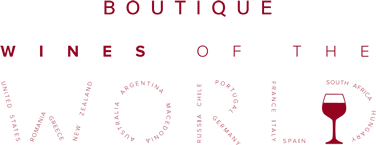ACCORDION 1
The first definition of a wine-area Chianti was made in 1716. It described the area near the villages of Gaiole, Castellina and Radda; the so-called Lega del Chianti and later Provincia del Chianti (Chianti province). In 1932 the Chianti area was re-drawn and divided in seven sub-areas: Classico, Colli Aretini, Colli Fiorentini, Colline Pisane, Colli Senesi, Montalbano and Rùfina
ACCORDION 2
Most of the villages that in 1932 were suddenly included in the new Chianti Classico area added in Chianti to their name-such as Greve in Chianti which amended its name in 1972. Wines labelled “Chianti Classico” come from the biggest sub-area of Chianti, that includes the original Chianti heartland.
ACCORDION 3
Only Chianti from this sub-zone may boast the black rooster seal (known in Italian as a gallo nero) on the neck of the bottle, which indicates that the producer of the wine is a member of the Chianti Classico Consortium, the local association of producers.
ACCORDION 4
Other variants, with the exception of Rufina from the north-east side of Florence and Montalbano in the south of Pistoia, originate in the respective named provinces: Siena for the Colli Senesi, Florence for the Colli Fiorentini, Arezzo for the Colli Aretini and Pisa for the Colline Pisane. In 1996 part of the Colli Fiorentini sub-area was renamed Montespertoli.
Accordion
During the 1970s producers started to reduce the quantity of white grapes in Chianti. In 1995 it became legal to produce a Chianti with 100% Sangiovese. For a wine to retain the name of Chianti, it must be produced with at least 80% Sangiovese grapes. Aged Chianti (38 months instead of 4–7), may be labelled as Riserva. Chianti that meets more stringent requirements (lower yield, higher alcohol content and dry extract) may be labelled as Chianti Superiore, although Chianti from the “Classico” sub-area is not allowed in any event to be labelled as “Superiore”. The earliest documentation of a “Chianti wine” dates back to the thirteenth century when viticulture was known to flourish in the “Chianti Mountains” around Florence. The merchants in the nearby townships of Castellina, Gaiole and Radda formed the Lega del Chianti (League of Chianti) to produce and promote the local wine. In 1398, records note that the earliest incarnation of Chianti was as a white wine. In 1716 Cosimo III de’ Medici, Grand Duke of Tuscany issued an edict legislating that the three villages of the Lega del Chianti (Castellina in Chianti, Gaiole in Chianti, and Radda in Chianti) as well as the village of Greve and a 3.2-kilometre-long stretch (2-mile) of hillside north of Greve near Spedaluzzo as the only officially recognized producers of Chianti.
1Lorem ipsum 1
2”Lorem
3”Lorem
4”Lorem
Style 2 & counter
The late nineteenth century saw a period of economic and political upheaval. First came oidium and then the phylloxera epidemic would take its toll on the vineyards of Chianti just as they had ravaged vineyards across the rest of Europe. The chaos and poverty following the Risorgimento heralded the beginning of the Italian diaspora that would take Italian vineyard workers and winemakers abroad as immigrants to new lands. Those that stayed behind and replanted choose high-yielding varieties like Trebbiano and Sangiovese clones such as the Sangiovese di Romagna from the nearby Romagna region. Following World War II, the general trend in the world wine market for cheap, easy-drinking wine saw a brief boom for the region. With over-cropping and an emphasis on quantity over quality, the reputation of Chianti among consumers eventually plummeted. By the 1950s, Trebbiano (which is known for its neutral flavours) made up to 30% of many mass-market Chiantis. By the late twentieth century, Chianti was often associated with basic Chianti sold in a squat bottle enclosed in a straw basket, called a fiasco. However, during the same period, a group of ambitious producers began working outside the boundaries of DOC regulations to make what they believed would be a higher quality style of Chianti. These wines eventually became known as the “Super Tuscans”.
1Lorem ipsum 1
2”Lorem
3”Lorem
4”Lorem
Style 3 & icon left
Today, most Chianti falls under two major designations of Chianti DOCG, which includes basic level Chianti, as well as that from seven designated sub-zones, and Chianti Classico DOCG. Together, these two Chianti zones produce the largest volume of DOC/G wines in Italy. The Chianti DOCG covers all the Chianti wine and includes a large stretch of land encompassing the western reaches of the province of Pisa near the coast of the Tyrrhenian Sea, the Florentine hills in the province of Florence to the north, to the province of Arezzo in the east and the Siena hills to the south. Within this regions are vineyards that overlap the DOCG regions of Brunello di Montalcino, Vino Nobile di Montepulciano and Vernaccia di San Gimignano. Any Sangiovese-based wine made according to the Chianti guidelines from these vineyards can be labelled and marked under the basic Chianti DOCG should the producer wish to use the designation.
